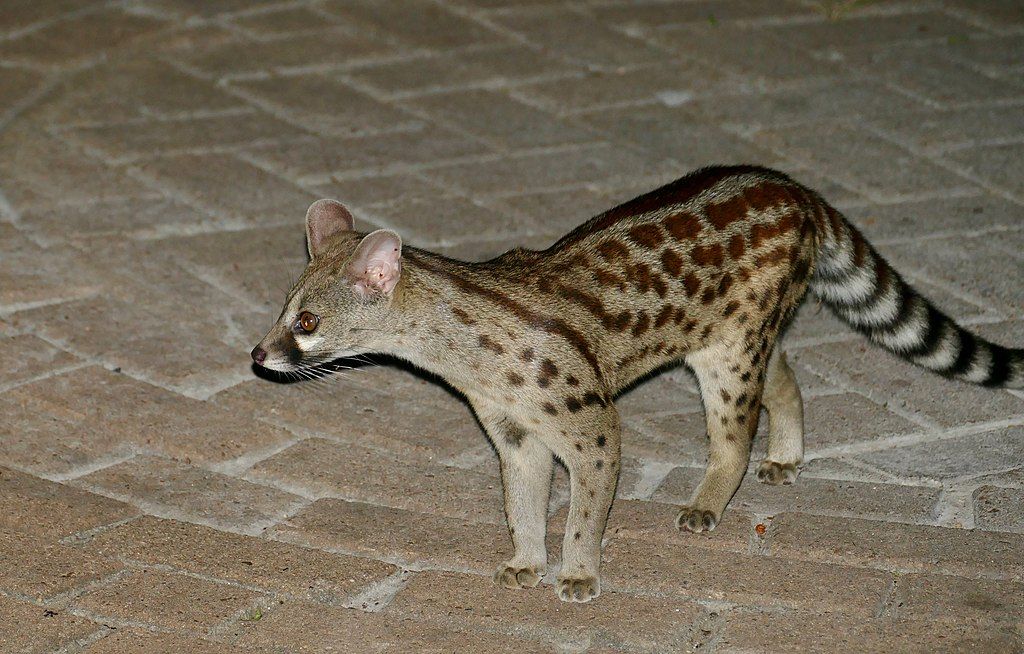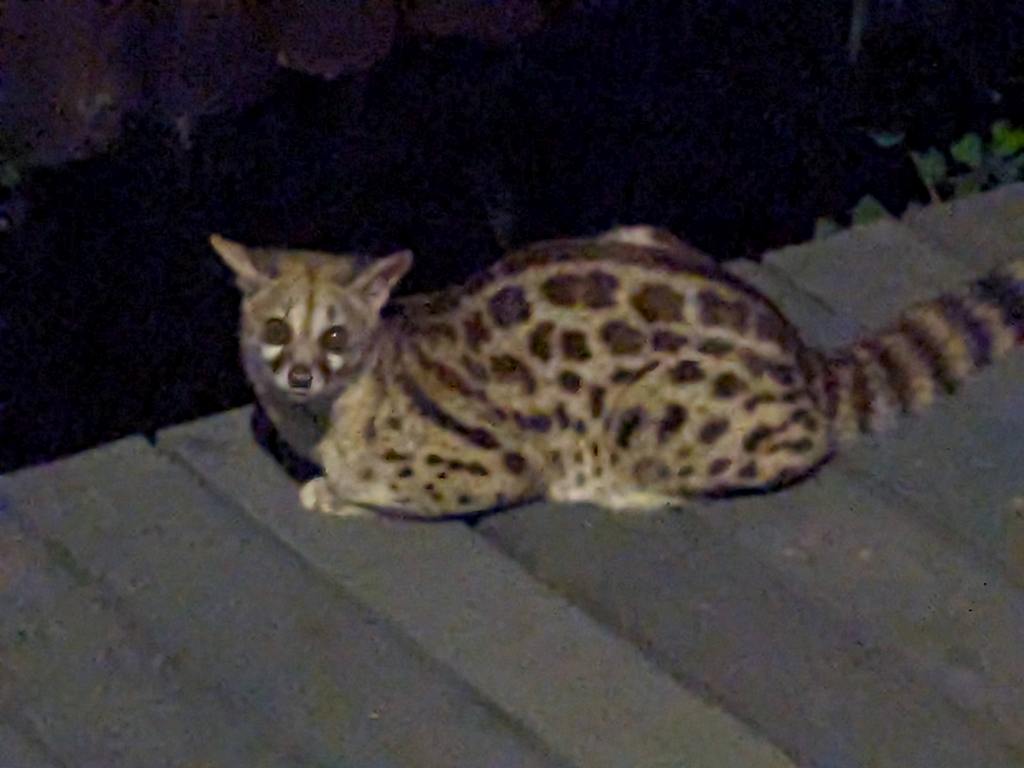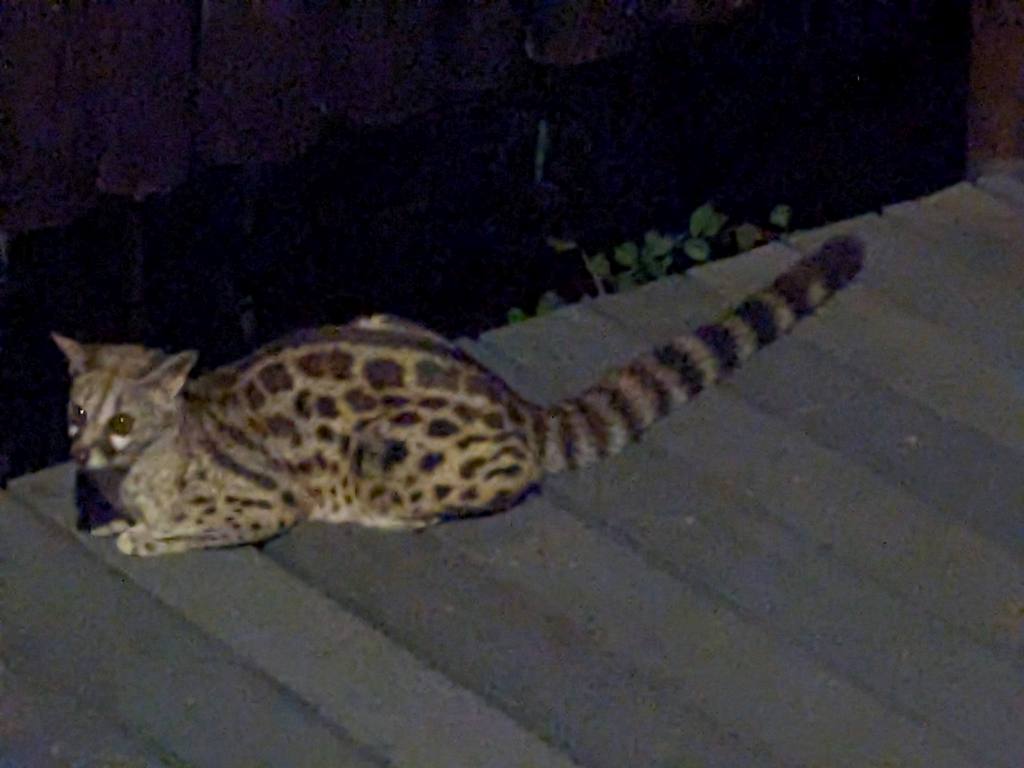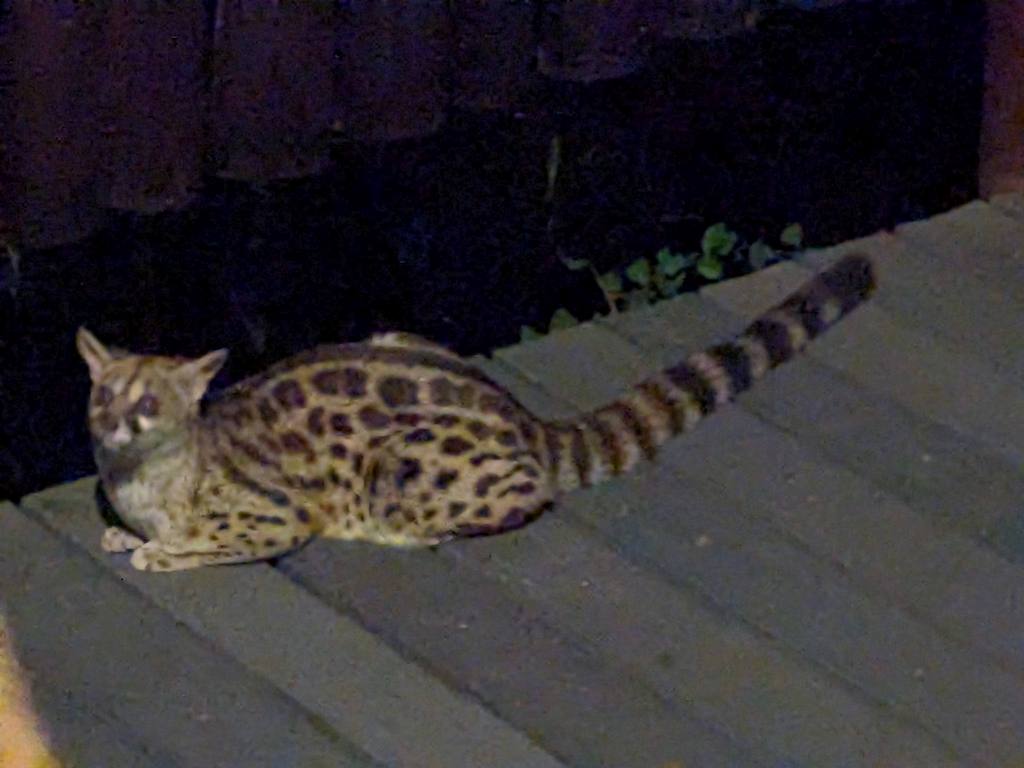6 February 2024
During our stay at Chobe Savanna Lodge, Nambia we ate dinner after sunset on an outdoor deck with a beautiful view of the Chobe River and Botswana’s Chobe National Park, pictured below from Chobe Savanna Lodge’s website.

On our second evening we had a visitor that looked like a cat though not a cat at all.
The rusty-spotted or large-spotted genet (Genetta maculata) is a member of the Viverridae family that includes civet cats, none of which are felines.
Genets are excellent climbers so this one must have clambered up the deck poles in the dark to wait at the edge of the dining area for a handout. He has an omnivorous diet that includes rodents, doves, skinks, spiders, eggs, fruits, berries and seeds so our buffet certainly had something to tempt him.
Fortunately for everyone our genet was shy and ran to hide if anyone approached. He always crouched low.
If he’d stood up to his full height we would have realized he was not a cat. (Photo from Wikimedia)

(photo credits are in the captions)



Looks like a weasel’s face.
It seems like you had a wonderful time, Kate. Based on all the birds and animals you saw, and the weather you had, do you think January is more favorable for this trip, or maybe November? How did you choose?
Thank for posting all that you do!
Mary Ann
Mary Ann, My decision to go to Africa in late January was based on my desire to be in the tropics during Pittsburgh’s winter. Birding is best in southern Africa during their Spring/Summer. For birding purposes in the Four Corners region of Africa, the Road Scholar trip runs 3 times in late Oct through November, then 3 times in late Jan through mid Feb. … If you want to see the pennant-winged nightjar check eBird for location and dates reported. Its photos were from Kenya-Tanzania.